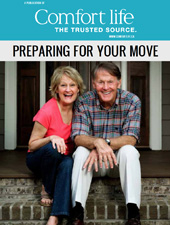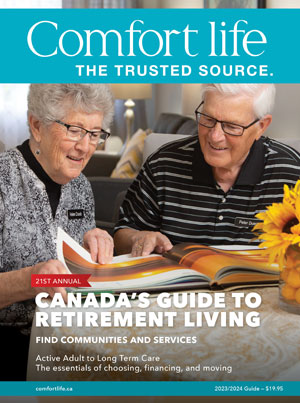What to know about this topic:
- Eat in great company
- Don’t find a reason to exercise, let a reason to exercise find you
- Live among friends
- Don’t retire from anything
- Take care of yourself first
- Make your community a Blue Zone
“There is a lot of confusion around what helps us live longer,” says Dan Buettner in his popular TED Talk, “How to Live to Be 100+.” Moreover, he feels that we all could, and should, live longer lives. “The best science tells us that the capacity of the human body, my body, your body, is about 90 years; a little bit more for women. But life expectancy … is only 78. So somewhere along the line, we’re leaving about 12 good years on the table. These are years that we could get. And research shows that they would be years largely free of chronic disease, heart disease, cancer, and diabetes.”
Why don’t we get those 12 years? It’s a question Buettner approached in a unique way. As an explorer and National Geographic Fellow, he chose to visit Blue Zones—places around the world where people live the longest, healthiest lives—in the hopes of learning what makes those populations different from the norm. What he found wasn’t healthy food and physical training, but something else entirely: social cohesion. Even if people eat rich foods, drink a bit, and don’t go to exercise classes, they still live longer because they interact with others more consistently. Per the nursery song, it’s actually true that the more we get together, the happier we’ll be, and we’ll also live longer too. Below, we look at six ways to gain the health and lifestyle benefits of life in Blue Zones, and how they remind us of stories inside today’s retirement communities.
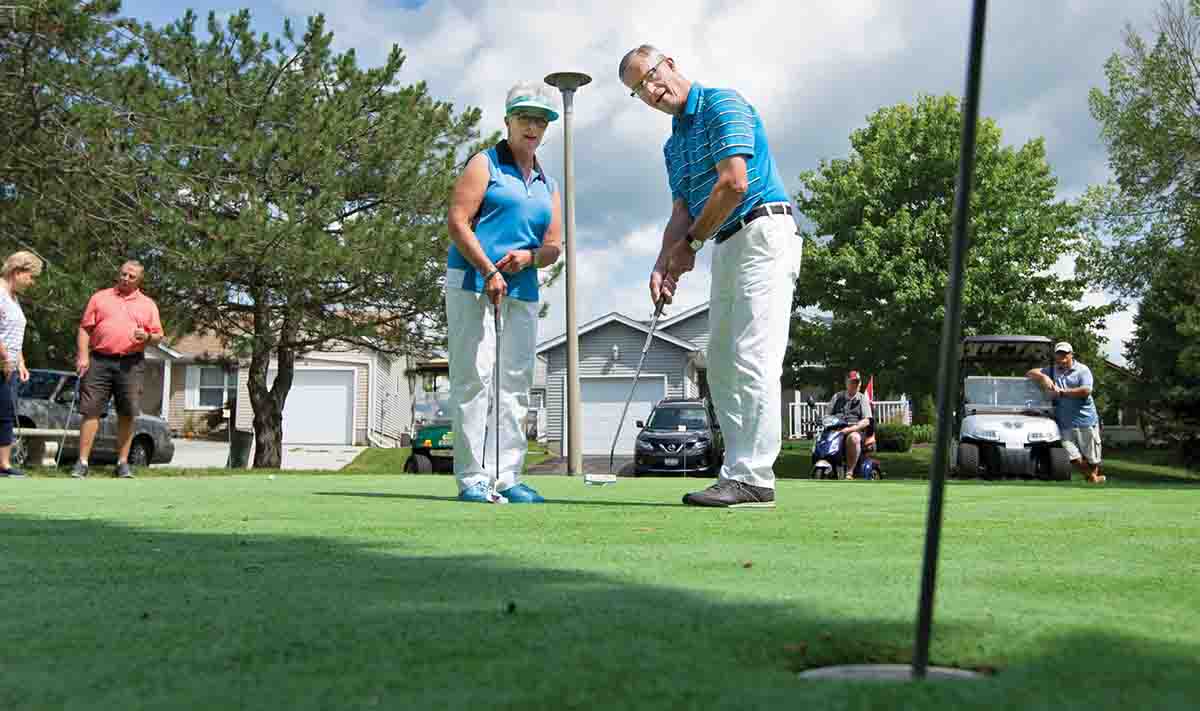
Eat in great company
“One of my favourite parts of medical school,” says Bill Thomas, “was that a group of us had dinner at the Beth Israel Hospital cafeteria every night. And it would be two and a half hours of arguing cases—intense and really great.” When he became the director of Chase Memorial Nursing Home in upstate New York, the lack of conversation in the cafeteria struck him. So he changed that, creating the dining area as a social space, with the kinds of food and experiences that would encourage people to sit, stay, and talk. In so doing, he created Eden Alternative, a model that has become internationally acclaimed and used in seniors’ communities around the world. He felt that meal times needed to be about more than just nutrition. They could be valuable opportunities to bolster social interaction.
They want to have a social experience, to come down to talk at the dining table. We want to give them a dining experience. Not just to come and eat and go.
That understanding is apparent in Delmanor Northtown in Toronto. “If people are feeling hungry, they’ll put a piece of cheese between two pieces of bread,” says Divakar Raju, Delmanor’s corporate manager of culinary services. “When they come down, they want more than that. They want to have a social experience, to come down to talk at the dining table. We want to give them a dining experience. Not just to come and eat and go.” To the people he serves, Raju is a chef, an entertainer, a listening ear, and a social convener. It’s a challenge he meets enthusiastically, every day, and he inspires his staff to do the same. “I always tell all my chefs, you need to go out there and talk to the people, introduce yourself, introduce your cooks. ...You need to be front and centre, meeting all the residents, talking to them, saying hi, asking how it’s going.”
The fact is, when we prepare our own meals and eat alone, we tend to eat less, and worse. “Some seniors living alone have a tendency to go back to basics,” says Rachelle Vroom, executive director of Symphony Senior Living Orleans. “They will have tea and toast and that’s what they eat every day. And when they’re home alone, they don’t want to rely on others to help.” And they won’t. But given the structure provided in communities like Symphony Orleans, people regain an interest in healthier eating habits. Vroom even recalls one instance where she had to call a family to help buy new clothes for a resident who had started to eat more—and better—after several months there. “She’s now back at a healthy weight. She’s got more energy, she’s doing more, and she’s also socializing more now because she has that physical energy to do so. You know, she’s made some wonderful friends here, too.”
When we eat with others, we also eat a greater variety of things, and meals become more interesting than tea and toast. “We’ve had shawarmas, we’ve had jerk chicken,” says Shawn Allison, food service manager at The Erinview in Mississauga. “We’ve had a lot of very flavourful food. And people come to love it … which is great. I would say they become more adventurous here. They do like trying new things,” which is less likely for people living alone.
As important as the food is, Raju believes that it’s also about getting people together, sharing something. “Those are moments that we need to create for people,” he says. “That’s what it’s all about.”
As far as diet, Buettner mostly shies away from advocating for specifics, with one exception: beans. “They’re amazing!” he says. Of course, beans alone, or in excess, aren’t a good idea. Rather, it’s a reminder that we don’t need fad diets—paleo, keto, whatever the next ones will be—we just need to be reasonable, in line with Michael Pollan’s dictum, “eat food, not too much, mostly plants.” And beans.
Residents have a lot of input into the food and anything else in the community.
Shawn Allison incorporates beans into many items at the Erinview. “We have bean salads including marinated green beans, Mexican bean salad with chickpeas, bean soups, or just as our daily vegetable.”
Rachelle Vroom shares an anecdote of how one resident at Symphony Senior Living Orleans wanted to have the same baked beans his mom had served when he was a child. The request was incorporated into the community menu and is popular with its heavily French-Canadian population. This is also typical of the flexibility seen in many communities. Vroom says, “Residents have a lot of input into the food and anything else in the community.”
Don’t find a reason to exercise, let a reason to exercise find you
Of the people who live in Blue Zones, says Buettner, “none of them exercise, at least the way we think of exercise. Instead, they set up their lives so that they are constantly nudged into physical activity.”—which is another way of saying that they live active lives without realizing it.
Mark Crawford-Smith is a resident of Grand Cove, an adult lifestyle community in Grand Bend, Ontario. It’s a short walk to the sandy shores of Lake Huron, one that residents regularly make. Says Mark, “What should be a five-minute walk often turns into a two or even three-hour walk as people come out to talk to you, or, as is often the case, invite you to join in whatever it is they’re doing.”
Ask Mark if he exercises, and he probably doesn’t think of it that way. It just begins with a bit of movement— that five-minute walk—and the nature of his community expands it into hours out of the house, every day. That, and the social interaction, is his life at Grand Cove.
When they do physical activity, it’s things they enjoy. Their lives are set up in a way that they have the right outlook.
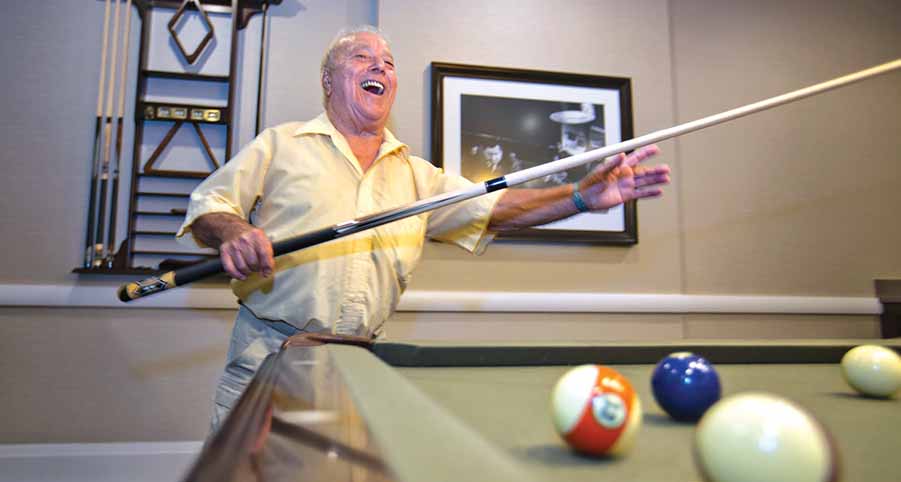
At Wilmot Creek in Newcastle, Ontario, the deliberately central placement of the tennis courts and golf course encourages people to use them. And it works wonderfully. As community member Lily puts it, “people love to golf, and the fact is that you can come out any time and play here.”
Her friend, Reid, adds, “If you figure out what a game of golf would cost you elsewhere… Well, here, you can play golf from morning to sundown.” Living in a community where activities beckon daily gives people a reason to stay active.
As Buettner describes life in Blue Zones, “When they do physical activity, it’s things they enjoy. Their lives are set up in a way that they have the right outlook.”
Live among friends
Buettner makes a blunt observation arising out of the Framingham Study: isolation is harmful to our health and can, in fact, be fatal. Begun in 1948 and continuing to this day, this longitudinal study of cardiovascular health has become foundational to much of what we now consider healthy living. An important, if surprising, finding of the study is the influence of friends on our overall well-being. As Buettner says, “If your friends’ idea of recreation is physical activity, if they drink a little but not too much, if they eat right and are engaged, if they’re trusting and trustworthy, that is going to have the biggest impact over time” on your personal level of fitness, health, and longevity.
While floor plans and services are what we look at first when we consider a retirement community, ultimately it’s the social aspect that becomes most important. Joyce Kinloch at Prince of Peace in Calgary speaks for many in communities across the country when she says “the great thing about living here is that you just need to open your door and someone smiles at you. Everyone here is helpful.”
Social isolation is the public health risk of our time
Buettner points out the value of moais, lifelong groups of friends, in the Blue Zone of Okinawa, Japan. “If you’re in a moai,” he says, “you’re expected to share the bounty if you encounter luck. And if things go bad, you always have someone to share that with, too, as you travel through life together.”
At the Westhill in Waterloo, you’ll find one example of an impromptu moai, in the group of friends Lois Swanson has made. Her everyday companions always include Bill, Mike, and Alice. The foursome have been almost inseparable since Bill moved in two years ago. “We’re the talk of the community,” says Lois. “We always have a very good time, we go out for meals, sometimes the four of us, and we’ve got along very well.” Meals away from the Westhill include picnics outdoors, where interaction flourishes in a natural setting. “The purpose,” says Lois, is “to get out, of course, but to get out together. We had one picnic in Stratford, right along the river there, and it was just beautiful. You go there and you sit and watch the swans and have a lovely lunch in the sunshine with a bunch of friends.”
“Social isolation is the public health risk of our time,” says Susan Pinker, a professor of clinical and developmental psychology at McGill University in Montreal. Like Buettner, she’s looked to Blue Zone communities for insight into why. While women typically are the longest living, Sardinia, an Italian island in the Mediterranean, is home to the world’s longest-living men. The villages are characterized by tightly spaced homes, connected by narrow, winding alleyways. Villagers’ lives constantly intersect, daily, as a matter of course. Pinker feels there is hidden value in this closeness. “Simply making eye contact with somebody, shaking hands, giving somebody a high five is enough to release oxytocin.” Regular positive interactions, she implies, are like medications that prolong and improve our lives.
Schlegel Villages, found in cities across Ontario, exemplify this ideal, in a community design that’s influenced other developments. These villages are wellnamed, as they perfectly recall small towns of yesteryear, including a general store, a library, and a town square. The town square is a meeting ground where friends greet each other and people gather to plan outings or just chat.
Bev Hall speaks for many residents of retirement communities, in her description of Harmony Hill in Oshawa. “It’s like moving into a small village years ago; there was always time to step onto the porch and greet the new person. Well, here, it’s the same way. The doors are always open… people always have a ‘Hello, how are you?’ and ‘Have you had a good day?’”
Don’t retire from anything
Buettner says that typically we think of our lives as synonymous with our work lives. Usually the transition into retirement happens in a day, a stark boundary between our professional lives and, well, something else. He contrasts that with another aspect of life in the Blue Zone of Okinawa. “In the Okinawan language, there is not even a word for retirement. Instead, there is one word that guides your entire life, ikigai. Roughly translated, this means ‘the reason for which you wake up in the morning.’” For many in Okinawa, like the centenarian fisherman who still goes out three times a week, this ikigai has never changed.
The rejuvenative aspect of retirement living comes in great part from people’s renewed connection with those around them.
For 33 years, the reason Bill Klos woke up was to teach high school, but after retiring “cold turkey,” like so many in our culture, Bill tells us, “I wasn’t taking very good care of myself. I lost 85 pounds in six months.” He started volunteering by teaching iPad at the Westhill, and as it turns out, he also “fell in love with the place.” Having moved in, Bill has found a way to recapture his love for teaching. “I teach a few ladies every Thursday and they’re doing really well. And I still go into teacher mode, it still kicks in.”
Similarly, Mary Jean had spent much of her life exploring her passion for music, studying under Italian masters in her teens, and performing throughout her life as a recitalist and soloist in choirs and in oratorios. Living alone in a Vancouver-area condo, though, she had few social outlets, let alone one for her muse. But after moving into Cedar Springs PARC, “music,” she says, is once again “a big part of my life.” Her passion has rekindled thanks to Cedar Springs PARC’s music room, where she can practice for hours with friend and accompanist, Lorraine. Since moving to Cedar Springs, Mary Jean and Lorraine have already put on one musical performance for fellow residents, with at least one more in the works.
The rejuvenative aspect of retirement living comes in great part from people’s renewed connection with those around them. In the social setting of a retirement home, they find that sharing their personal enthusiasms also revives a zeal for living.
Take care of yourself first
For Bill and Mary Jean, retirement living hasn’t been a move away from what they like, but back to what they want to do. It’s good for you, as the old adage says, to follow your passion. You live longer and happier, something that has been demonstrated through longitudinal studies, Framingham and beyond.
“If I had to do it all over again,” says Jim Crompton, a resident at Morningside Retirement Community in New Hamburg, Ontario, “I’d learn golf earlier.” This is a typical lament. It may not have been exactly what he always wanted to do, because the days of fulfilling our obligations to family are their own reward. But those things take time, our time, time we can’t use for more personal interests.
It’s been shown that the more we pursue our passions, the healthier we’ll be. Many of the mundane things we do as parents—cooking, cleaning house, running errands—necessary as they are, do not really define us. What does? Passion. We need an outlet for our personal interests just as desperately as we need oxygen and clean water.
It’s not about giving, it’s about taking. It’s not about anyone else’s experience or interest but your own. For many, like Cathy at Cedar Springs PARC, the freedom they find in retirement communities allows for the discovery of new interests that bloom when given space. Cathy stumbled across a water-colour painting class in the area. “The colours and everything were just wonderful. I thought, I can do this!” It’s part of our culture to deny our interests, to say ‘no, I shouldn’t’ or ‘I don’t think I should. We don’t want to be seen as self-indulgent but it’s unhealthy to deny ourselves the things that sustain us. Cathy says, “I’m in my fifth year. I found an instructor and now, I’m learning new techniques.” Our desires, our participation in the world, is what gives our lives meaning. And, frankly, it’s nice to have options. “You might not want to go swimming,” says Bev Hall, “but you might, too.”
It’s also about agency, and having control over your life. We all want to be in charge of our days. to do what we want, by our own schedule. We want to exercise our interests, find new ones, or take time out. Many, in their current situations, don’t have this kind of freedom.
Our desires, our participation in the world, is what gives our lives meaning.
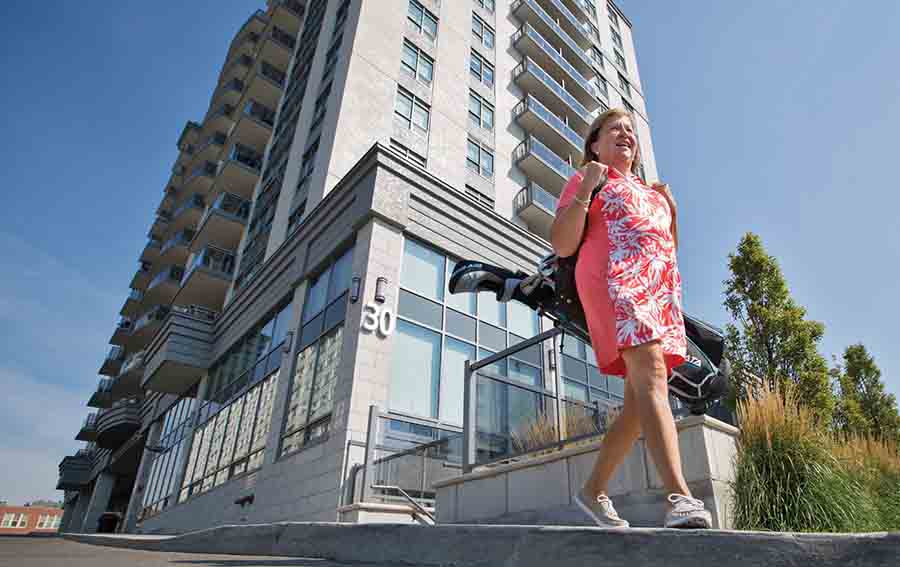
Make your community a Blue Zone
“It’s a biological imperative to know we belong,” says Pinker. “Building in-person interaction into our cities, into our workplaces, into our agendas bolsters the immune system, sends feel-good hormones surging through the bloodstream and brain and helps us live longer.”
What we see in the stories of Bill, Lois, Mary Jean, Mark, Cathy and others is the inherent value of community. For many of our parents, a move into a retirement community meant a move toward medical support, a move that was delayed until absolutely necessary.
Today, that model has been upended. An increasing number of retirement homes are structured around the things that help people in Blue Zones thrive, things missing from many suburban lives, no matter what our age. There is good food, not just healthy food. There is connection, and engagement with others who are just as keen to be connected and engaged. They are places where emotional, social, and physical needs are all given equal priority, and where talents and passions rule the day. People here have something the rest of us may in fact be missing out on.
The basis of deciding where to live at any age should be through the lens of possibility—and it serves everyone to consider any transition in that light. Finding a community isn’t about finding a place to stay; it’s about finding a place to live, a place to continue living a life with meaning and belonging. “Friends,” concludes Buettner, “are perhaps the most significant thing you can do to add more years to your life and life to your years.” That’s precisely what you’ll find in retirement communities across Canada.



